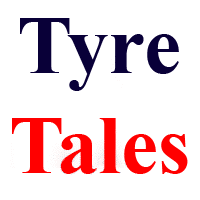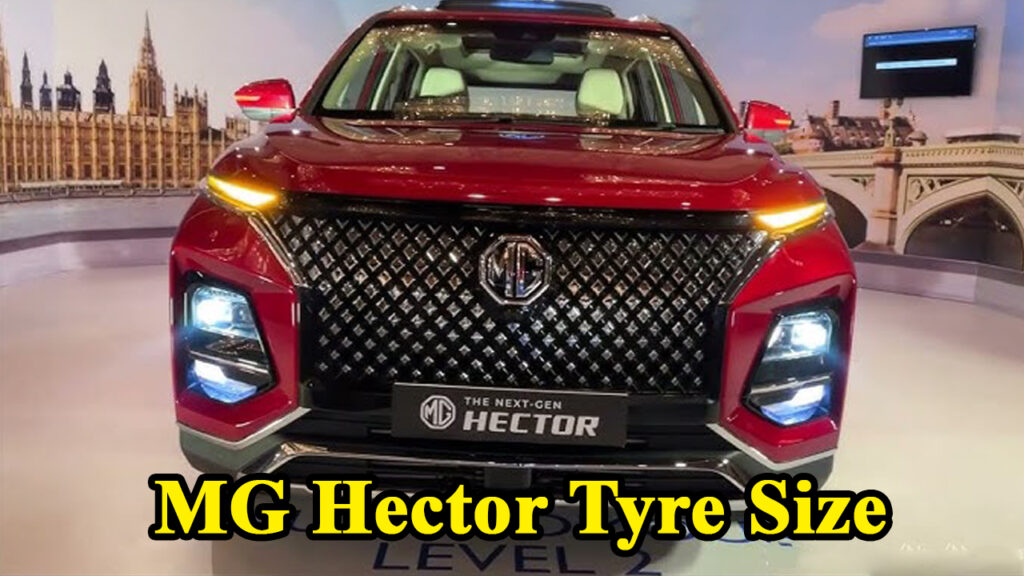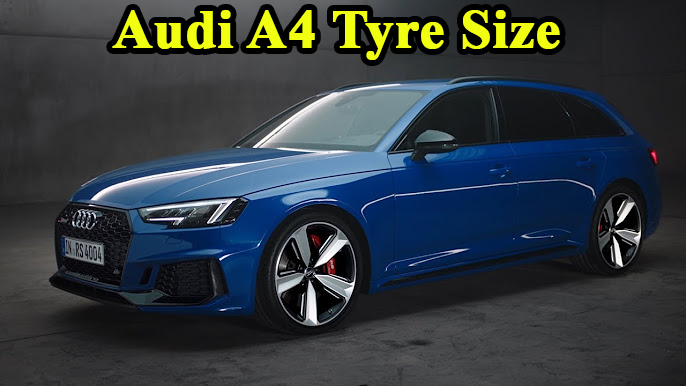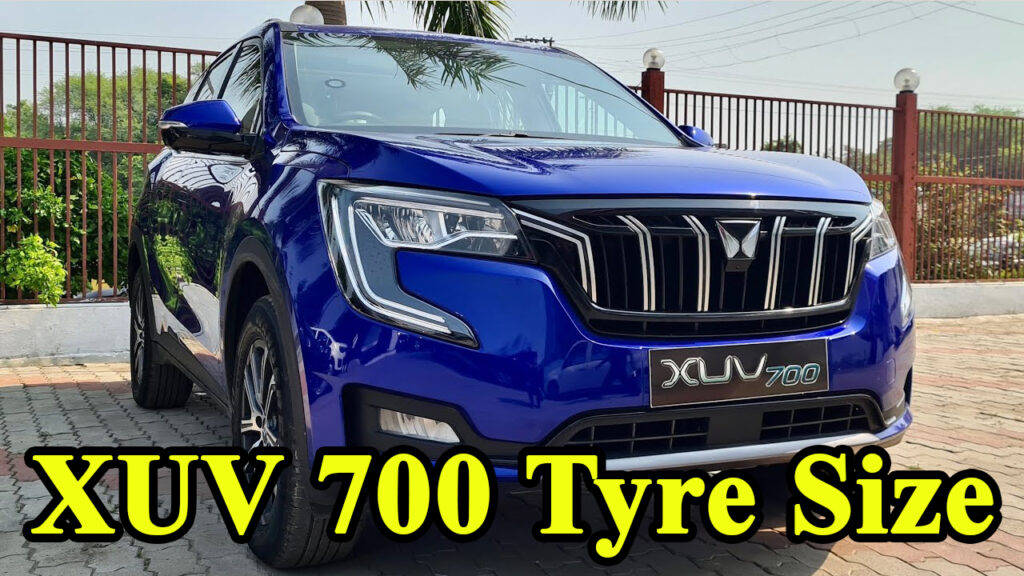MG Hector Tyre Size: Before we dive into the specifics, let’s break down what those numbers and letters on your tire’s sidewall actually mean. It’s like a secret code, but once you crack it, it’s quite straightforward:
- 215/60 R17 96H (Example)
- 215: This is the tire width in millimeters. It’s the measurement from one sidewall to the other.
- 60: This is the aspect ratio or profile. It represents the sidewall height as a percentage of the tire’s width. In this case, the sidewall height is 60% of 215mm. A higher number means a taller sidewall.
- R: This indicates Radial construction, which is the most common type of tire construction today, offering better ride comfort and stability.
- 17: This is the rim diameter in inches, indicating the size of the wheel the tire is designed to fit.
- 96: This is the load index, a numerical code that corresponds to the maximum weight the tire can support when properly inflated. A load index of 96 means the tire can carry 710 kg.
- H: This is the speed rating, an alphabetical code that indicates the maximum speed at which the tire can safely carry its load. “H” signifies a maximum speed of 210 km/h.
MG Hector and Hector Plus: A Tyre Size Rundown
The MG Hector and its extended sibling, the Hector Plus, come with different tire sizes depending on the variant and its trim level. It’s crucial to know your specific variant to ensure you’re getting the right size.\
Tyre Speed Rating: Your Ultimate Guide to Safety, Performance, and Smart Choices on Roads
Here’s a general breakdown of the common tire sizes you’ll find on various MG Hector and Hector Plus models:
Important Note: While the above table provides a general overview, it’s always best to double-check the exact tire size for your specific MG Hector model on the sticker located on the driver’s side door jamb or in your owner’s manual. Manufacturers sometimes introduce minor changes across model years or special editions.
Why Tyre Size Matters: Beyond the Numbers, It’s About Your Drive
The tire size isn’t just a technical specification; it profoundly influences how your MG Hector performs, feels, and even how much it costs to run.
1. Performance: Grip, Handling, and Braking
- Wider Tires (e.g., 215mm vs. slightly narrower): Generally offer a larger contact patch with the road, leading to improved grip, better cornering stability, and shorter braking distances, especially on dry surfaces. However, they can also increase rolling resistance.
- Lower Aspect Ratio (e.g., 55 vs. 60): Means a shorter, stiffer sidewall. This translates to more responsive handling, better feedback from the road, and a sportier feel. Think of it like a performance shoe – less cushioning, more direct connection.
2. Comfort: Taming the Indian Roads
- Higher Aspect Ratio (e.g., 60 vs. 55): A taller sidewall acts like an extra cushion between the road and your vehicle. This is particularly beneficial on Indian roads, which are often riddled with potholes, speed breakers, and uneven surfaces. A higher profile tire can absorb these impacts better, leading to a more comfortable ride for you and your passengers. I remember a trip to Pune from Mumbai where the express highway had a few unexpected craters. My Hector, with its compliant R17 tires, sailed over them with much less drama than a friend’s car with low-profile tires.
3. Fuel Efficiency: Every Drop Counts
- Rolling Resistance: This is the force that opposes a tire’s motion. Wider tires and tires with aggressive tread patterns generally have higher rolling resistance, meaning your engine has to work harder to keep the car moving, thus consuming more fuel.
- Weight: Heavier tires also contribute to reduced fuel efficiency. While the difference might seem small per tire, multiplied by four and over thousands of kilometers, it adds up.
4. Speedometer Accuracy: Keep It True
Installing tires with a significantly different overall diameter than the manufacturer’s recommendation can throw off your speedometer readings. If the new tires are larger in diameter, your speedometer will read lower than your actual speed, and vice-versa. This can lead to unintended speeding tickets or misjudging distances.
Hero Destini 125 Tyres: The Ultimate Guide to Performance & Safety
5. Aesthetics: The Visual Appeal
Let’s be honest, tires contribute significantly to a car’s overall look. Larger rims with lower profile tires often give a more aggressive and premium stance, which is why higher variants of the Hector come with 18-inch wheels. It’s a classic trade-off between looks and ride comfort.
Choosing the Right Tires for Your MG Hector: A Practical Guide
When it’s time to replace your Hector’s tires, or if you’re considering an upgrade, here’s what you need to consider:
When to Replace Your Tyres
- Tread Depth: The legal minimum tread depth in India is 1.6mm. However, experts recommend replacing tires when the tread reaches 2-3mm, especially if you frequently drive in wet conditions. Look for the tread wear indicators (small bars within the grooves).
- Age: Even if the tread looks good, tires degrade over time due to exposure to UV rays, heat, and chemicals. Most manufacturers recommend replacing tires every 5-6 years, regardless of mileage. Check the DOT code on the sidewall for the manufacturing date (e.g., “3023” means the 30th week of 2023).
- Damage: Any significant cuts, bulges, or punctures that can’t be safely repaired warrant immediate replacement. A bubble on the sidewall, for instance, is a ticking time bomb.
Popular Tyre Brands for MG Hector in India
India’s tire market is vibrant, with a range of domestic and international brands offering excellent options for the MG Hector. Some of the most popular and reliable choices include:
- Michelin: Known for premium quality, comfort, and low road noise. Models like the Primacy 4 ST are highly regarded.
- Goodyear: Offers a balance of performance and durability. Their EfficientGrip Performance SUV is a good option.
- Apollo: A strong Indian brand, offering good value for money with products like the Apterra Cross and Alnac 4G.
- MRF: Another prominent Indian brand known for its robust and long-lasting tires, such as the Wanderer Street.
- Bridgestone: A global leader with reliable and durable options like the Turanza series.
- CEAT: An Indian brand providing good all-round performance with tires like the SecuraDrive.
- JK Tyre: Offers a range of tires, with the UX Royale being a popular choice for SUVs.
- Yokohama: Known for its quiet and comfortable tires, with models like the BluEarth RV02.
Price Range: What to Expect in Mumbai
The cost of a single tire for your MG Hector can vary significantly based on the brand, specific model, and the tire size (R17 vs. R18). As of June 2025, you can generally expect to pay:
- For 215/60 R17 tires: ₹7,000 to ₹15,000 per tire.
- For 215/55 R18 tires: ₹9,000 to ₹22,000 per tire.
(These are approximate figures and can fluctuate based on dealer, offers, and location. I recently checked with a tire dealer in Bandra, Mumbai, and these were the general ranges they quoted for popular brands.)
Tire Maintenance for Optimal Performance and Longevity
Even the best tires won’t perform optimally or last long without proper care.
- Maintain Correct Tire Pressure: This is perhaps the single most crucial aspect of tire maintenance. Under-inflated tires lead to increased rolling resistance (poor fuel economy), uneven wear (shorter lifespan), and compromised handling and safety. Over-inflated tires can lead to a harsh ride, reduced grip, and uneven wear.
- MG Hector Recommended PSI (for standard conditions): 32 PSI for both front and rear tires.
- For loaded conditions (heavy cargo/passengers): 35 PSI for both front and rear.
- For highway driving: Slightly increase to 33-34 PSI for better fuel efficiency and stability.
- Personal tip: Always check your tire pressure when the tires are cold (before driving or after sitting for a few hours). The air expands when hot, giving you an inaccurate reading. I make it a point to check my Hector’s tire pressure every alternate Sunday morning, just before I head out for my errands.
- Regular Tire Rotation and Balancing: Rotating your tires every 5,000-8,000 km helps ensure even wear across all four tires, extending their lifespan. Balancing prevents vibrations at higher speeds, contributing to a smoother ride and preventing premature wear on suspension components.
- Wheel Alignment: If you notice your car pulling to one side, uneven tire wear, or a crooked steering wheel, it’s time for a wheel alignment. This ensures that all four wheels are parallel to each other and perpendicular to the ground. Mumbai’s uneven roads and frequent potholes can easily throw off your alignment.
- Visual Inspection: Make it a habit to regularly inspect your tires for any cuts, bulges, cracks, or embedded objects. Catching these issues early can prevent a sudden blowout and save you from a dangerous situation.
Upgrading Your MG Hector’s Tires: Pros and Cons
The temptation to upgrade your Hector’s tires to a larger size or a different profile is strong, especially for aesthetic reasons. While it can offer some benefits, it’s crucial to understand the potential downsides.
Case Study: Rajeev from Delhi’s Tire Dilemma
Rajeev, a friend of mine in Delhi, bought an MG Hector Smart variant that came with 18-inch wheels. He was initially quite happy with the look, but after a few months of daily commutes on Delhi’s varied road conditions, he started complaining about the harsh ride, especially over expansion joints and minor undulations. He considered upsizing his tires, but upon discussing with an expert, he realized the impact it would have on his speedometer and potential warranty issues. Instead, he opted for a softer compound tire from a premium brand in the same size, which significantly improved his ride comfort without compromising other aspects. This highlights that “upgrade” doesn’t always mean “bigger”; sometimes it means “better suited for your needs.”
Pros of Upgrading (e.g., wider tires or larger rim diameter):
- Enhanced Aesthetics: Larger rims and lower profile tires can give your Hector a sportier and more commanding presence.
- Improved Dry Grip and Cornering: Wider tires can offer a larger contact patch, potentially leading to better grip and more stable cornering on dry roads.
Cons of Upgrading:
- Compromised Ride Comfort: A lower aspect ratio (shorter sidewall) means less cushioning, resulting in a harsher ride, especially on bad roads.
- Reduced Fuel Efficiency: Wider and heavier tires increase rolling resistance, leading to a slight drop in fuel economy.
- Speedometer Inaccuracy: If the overall diameter of the new tire is different from the original, your speedometer and odometer readings will be inaccurate.
- Potential for Rubbing: Oversized tires might rub against the wheel wells or suspension components, especially during full steering lock or suspension compression, causing damage.
- Increased Tire Cost: Larger or more specialized tires are generally more expensive.
- Impact on Warranty: Modifying tire sizes outside of manufacturer recommendations could potentially void parts of your vehicle’s warranty related to suspension, steering, or even braking.
- Increased Road Noise: Some wider or more aggressive tire patterns can generate more road noise.
My advice? Stick to the manufacturer-recommended sizes unless you fully understand the implications and are willing to accept the trade-offs. If comfort is a priority, especially given Indian road conditions, even the smaller 17-inch wheels with a higher sidewall might be a better choice for some Hector owners.
Frequently Asked Questions (FAQ)
Q1: What are the primary tire sizes for the MG Hector?
A1: The MG Hector generally comes with two primary tire sizes: 215/60 R17 (found on lower to mid-range variants like Style, Super, Shine) and 215/55 R18 (on higher variants like Smart, Sharp, Savvy). The Hector Plus also uses these sizes depending on the variant.
Q2: How often should I check my MG Hector’s tire pressure?
A2: It’s recommended to check your MG Hector’s tire pressure at least once a month, and ideally, before any long road trips. Always check when the tires are cold.
Q3: What is the recommended tire pressure for the MG Hector?
A3: For standard, unloaded conditions, the recommended tire pressure for both front and rear tires of the MG Hector is generally 32 PSI. For loaded conditions or highway driving, it’s advisable to increase it slightly to 33-35 PSI. Always refer to the sticker on your car’s driver’s side door jamb or the owner’s manual for precise recommendations.
Q4: What are some good tire brands for the MG Hector in India?
A4: Popular and reliable tire brands for the MG Hector in India include Michelin, Goodyear, Apollo, MRF, Bridgestone, CEAT, JK Tyre, and Yokohama. The best choice depends on your priorities (comfort, performance, durability, budget).
Q5: How much does it cost to replace a single tire on an MG Hector?
A5: The cost can vary widely based on size and brand. For a 215/60 R17 tire, expect to pay approximately ₹7,000 to ₹15,000. For a 215/55 R18 tire, the price can range from ₹9,000 to ₹22,000. Prices are subject to change and vary by location and dealer.
Q6: Can I change my MG Hector’s tire size to something bigger or smaller?
A6: While physically possible, it’s generally not recommended to deviate significantly from the manufacturer’s specified tire sizes. Doing so can impact your speedometer accuracy, fuel efficiency, ride comfort, handling, and potentially void your vehicle’s warranty. If you must change, consult with a tire expert to understand the precise implications and ensure the overall tire diameter remains as close as possible to the original.
Conclusion: The Right Tires, The Right Drive
In the world of automobiles, tires are your only contact with the road. For your MG Hector, a vehicle known for its comfort, features, and road presence, choosing and maintaining the right tire size isn’t just about adhering to specifications; it’s about optimizing your entire driving experience. From navigating the bustling streets of Mumbai to cruising on the open highways of Maharashtra, the right tires ensure your Hector delivers on its promise of a comfortable, safe, and efficient journey.
Remember, investing in good quality tires and adhering to a disciplined maintenance schedule isn’t an expense; it’s an investment in your safety, your vehicle’s longevity, and ultimately, your peace of mind on every journey. Drive smart, drive safe!




